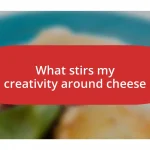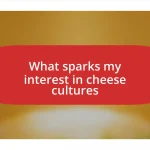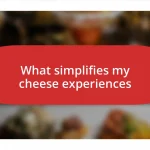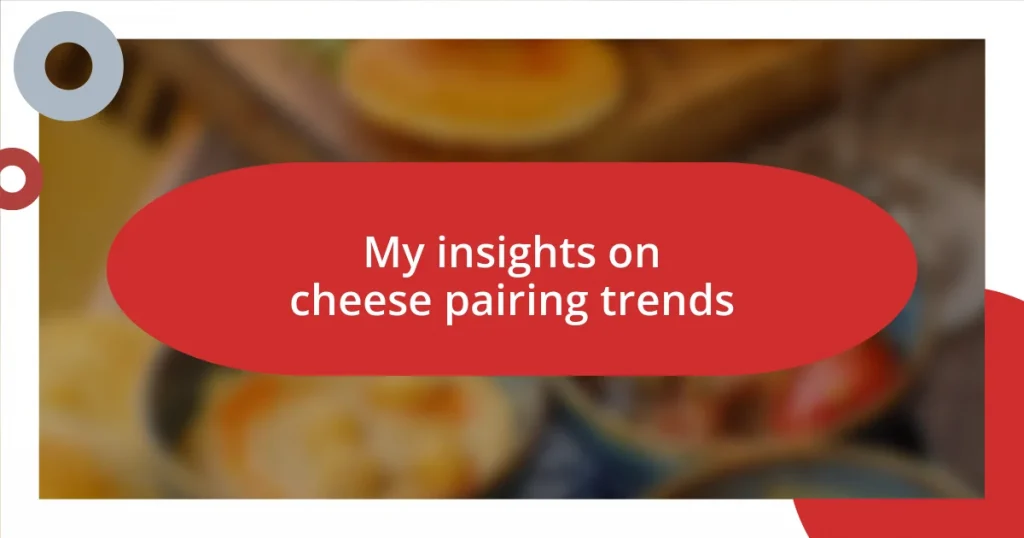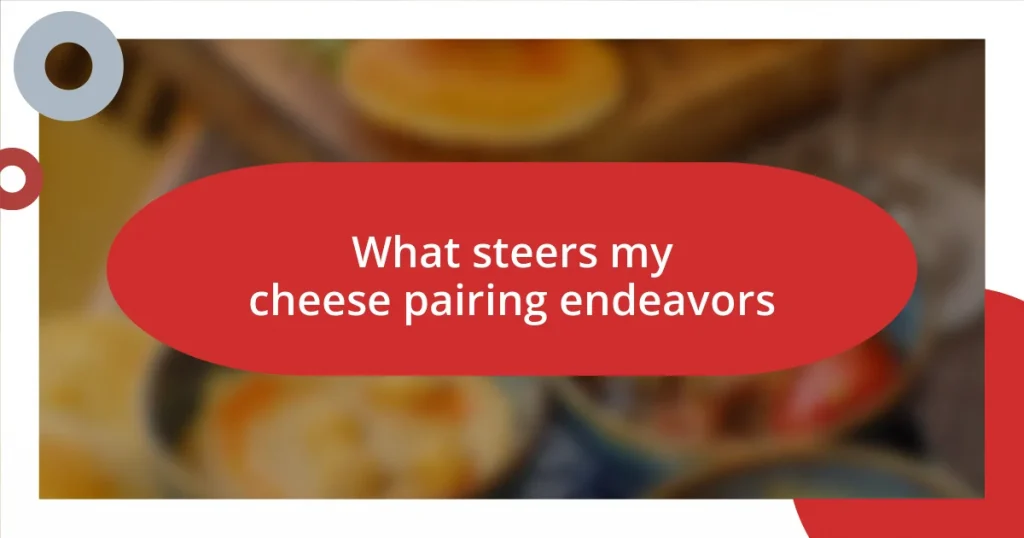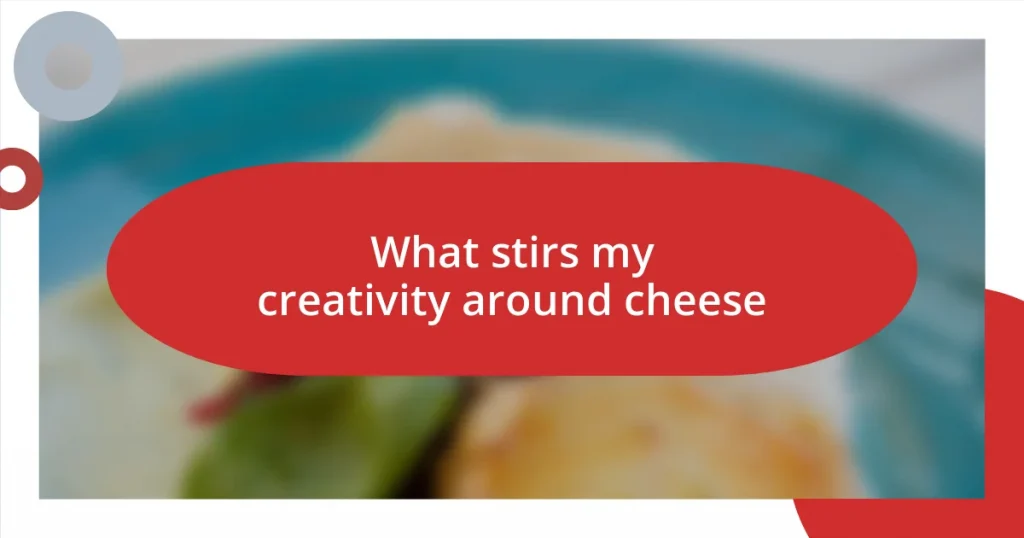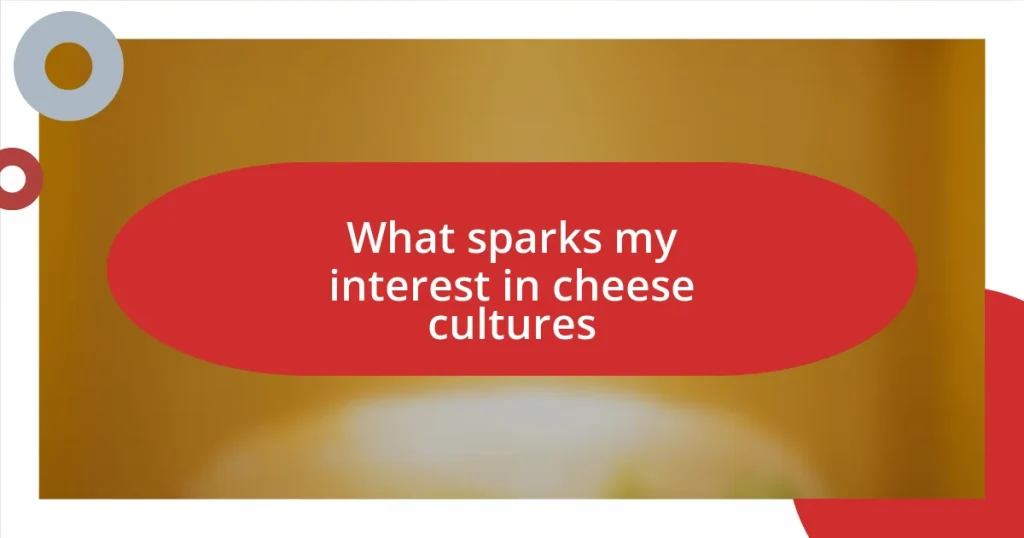Key takeaways:
- Cheese pairing enhances flavors by considering milk types, textures, and unique combinations, such as creamy Brie with sweet accompaniments.
- Current trends highlight the rise of artisanal, plant-based cheeses, adventurous pairings, and global influences in cheese selection.
- Creating a balanced cheese board involves diverse textures, thoughtful accompaniments, and an appealing arrangement to enhance the tasting experience.
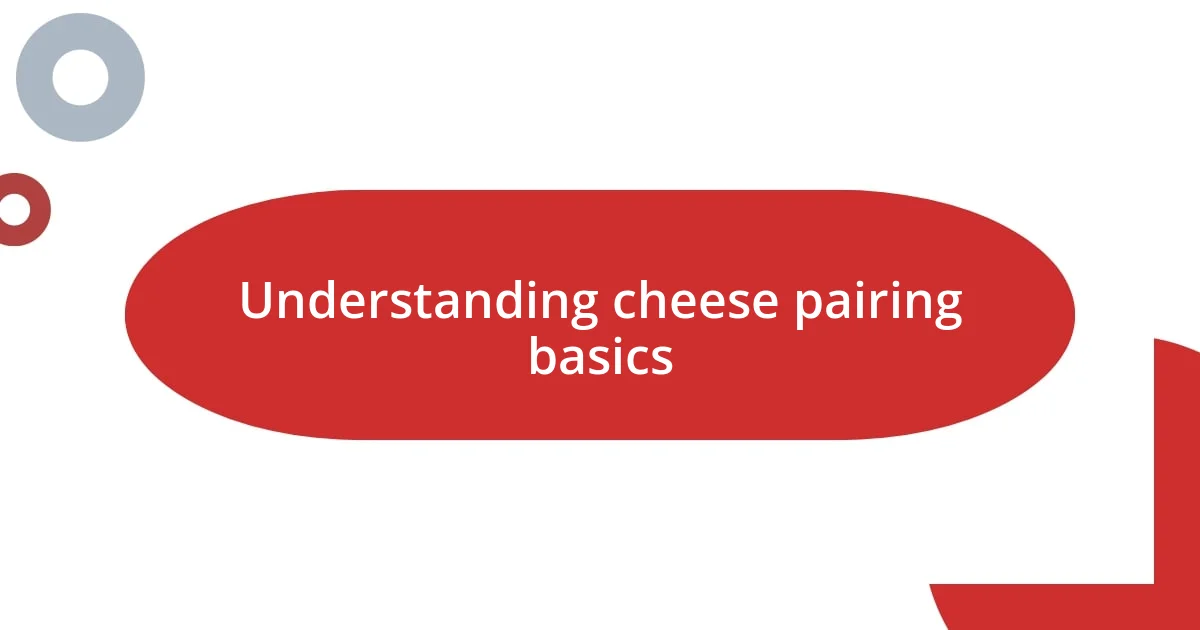
Understanding cheese pairing basics
When I first delved into the world of cheese pairing, I was amazed at how the right combination could elevate the flavors of both the cheese and the accompaniments. Have you ever tried a creamy Brie with a sweet fig jam? It’s a perfect example of how contrasting textures and flavors can create a harmonious balance on your palate.
One basic rule I’ve learned is to consider the milk type—cow, goat, or sheep—as each brings its own unique flavor profile. For instance, goat cheeses often have a tangy zing that pairs beautifully with fresh herbs or citrus fruits. It’s fascinating how something as simple as a drizzle of honey can transform a subtle goat cheese into an extraordinary experience that lingers long after the last bite.
Don’t overlook the role of texture, either. Hard cheeses like aged Cheddar or Parmigiano-Reggiano bring a satisfying crunch to a charcuterie board, especially when matched with crispy crackers or roasted nuts. Reflecting on past cheese tastings, I often find myself wondering—how did I not realize that pairing could be so simple yet so transformative? It’s a journey where each pairing teaches us something new, connecting us to the flavors and inspirations around us.
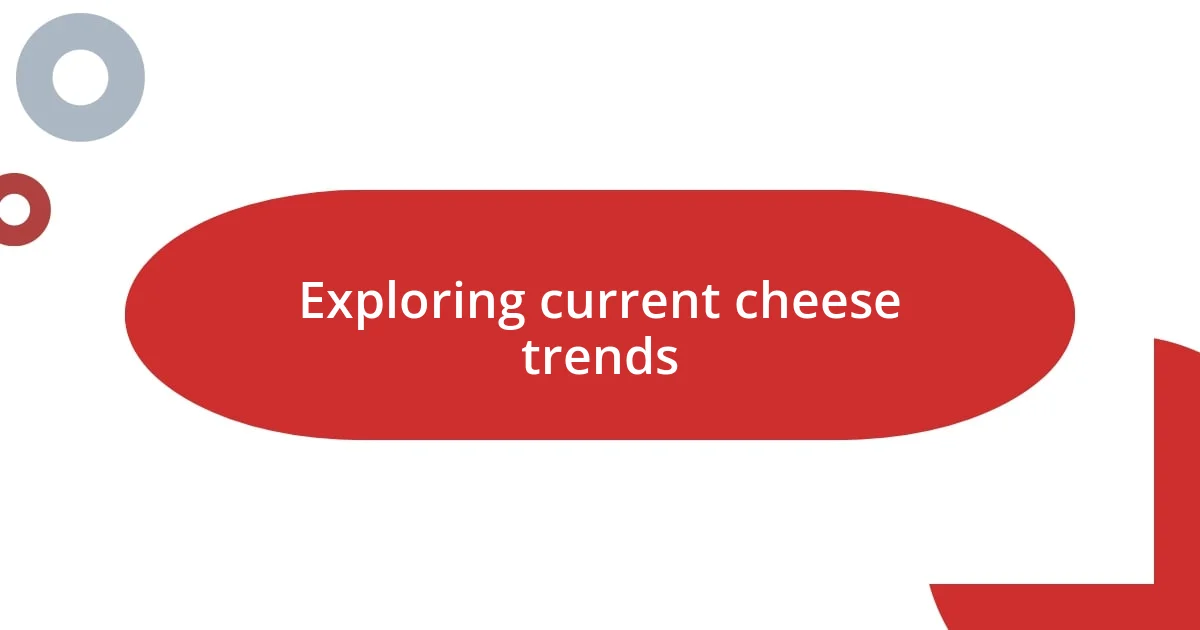
Exploring current cheese trends
The current cheese trends reflect not only shifts in consumer tastes but also a growing interest in sustainability and artisanal craftsmanship. After attending a local cheese festival recently, I was struck by the enthusiasm for small-batch, handcrafted cheeses. These artisanal products often showcase unique flavors that large-scale producers simply can’t replicate. The explosion of diverse flavors really opened my eyes to how regional cheeses can tell a story of their surroundings, which adds an exciting layer to the pairing experience.
Here are some notable cheese trends I’ve observed:
- Plant-Based Cheeses: There’s a significant rise in vegan or plant-based cheese options. For those who are lactose intolerant or following a vegan lifestyle, this has become an enticing alternative.
- Aging Trends: Cheeses are being aged longer, which intensifies their flavors. I find that a well-aged Gouda can transform a simple wine night into a sophisticated affair.
- Unique Pairings: People are becoming more adventurous, experimenting with unexpected pairings like blue cheese with chocolate or feta with watermelon. I remember my first brush with this kind of creativity—I paired blue cheese with dark chocolate, and it felt like a revelation.
- Global Influences: Cheese trends are increasingly global, with flavors and techniques from places like Eastern Europe and Asia making their way into mainstream cheese boards. The blending of cultures in cheese creation is something that clearly resonates with the modern palate.
These trends not only reshape the way we enjoy cheese but also deepen our connection to it, turning every tasting into an inspiring culinary adventure.
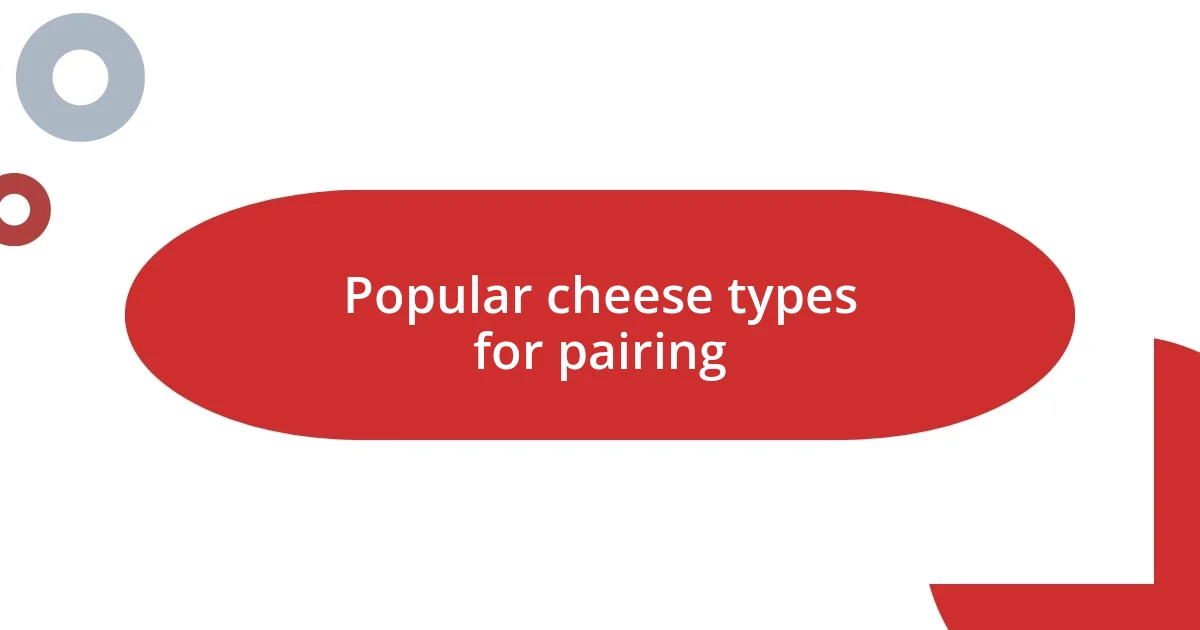
Popular cheese types for pairing
When it comes to popular cheese types for pairing, I often gravitate toward creamy varieties like Brie and Camembert. These cheeses not only melt smoothly on your tongue but also pair beautifully with fruits—think slices of pear or a drizzle of honey. I remember indulging in a delightful summer picnic atop a rolling hill, where a simple Brie paired with fresh berries turned into an unforgettable experience, combining textures and flavors that danced together with each bite.
On the other end of the spectrum, we have hard cheeses such as aged Gouda and Parmigiano-Reggiano. These cheeses excel in savory pairings, like a tangy balsamic reduction or even charcuterie. At a recent gathering, I paired aged Gouda with smoked meats, and the smoky notes complimented the cheese’s rich, caramel flavors perfectly. It’s experiences like these that remind me how essential the right companion can be in highlighting the unique characteristics of each cheese.
Don’t forget about goat cheese! Its tangy and often herbaceous quality opens the door to creative pairings with all sorts of ingredients. Personally, I adore pairing it with roasted beets and walnuts in salads; it creates a beautiful visual and flavor contrast. I can still recall the first time I tried it—the vibrant colors and bold flavors transported me; it felt like a celebration on the plate.
| Cheese Type | Ideal Pairings |
|---|---|
| Brie | Fresh fruits, honey |
| Aged Gouda | Smoked meats, balsamic reduction |
| Goat Cheese | Herbs, roasted beets, nuts |
| Parmigiano-Reggiano | Charcuterie, olives |
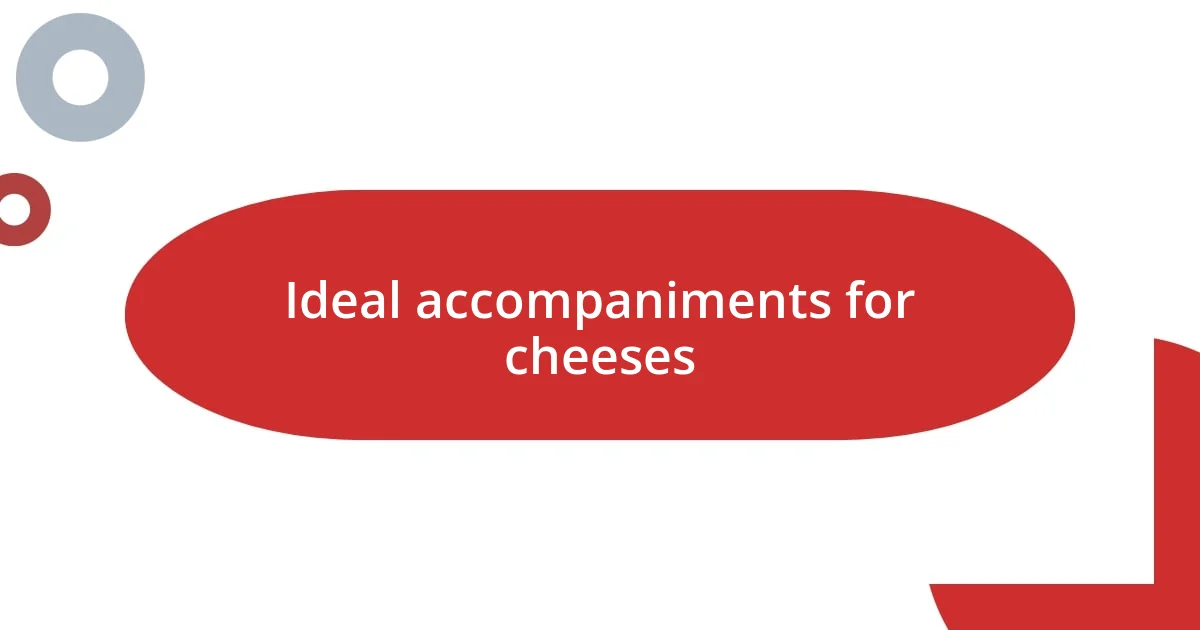
Ideal accompaniments for cheeses
Building a cheese plate is where the real fun begins. I’ve always believed that each cheese deserves an equally thoughtful companion. For instance, when savoring a nutty Emmental, I love serving it with honey-roasted almonds. It creates a wonderful harmony of flavors; the saltiness of the nuts perfectly balances the cheese’s sweetness. Have you ever experienced that delightful contrast on your palate?
Another ideal accompaniment that never disappoints is a hearty bread. I can still remember the warmth of a freshly baked baguette, paired with a creamy blue cheese. The texture of the bread against the soft, tangy richness of the cheese creates a sensory experience that feels so indulgent. And what’s more comforting than sharing a delightful cheese and bread combination with friends over a glass of wine? It feels like you’re creating little moments of joy.
Let’s not overlook vegetative accompaniments! Roasted vegetables are an unexpected gem when paired with cheese. Last fall, I roasted some Brussels sprouts and tossed them with a sprinkle of parmesan. That savory bite elevated the dish to something extraordinary; the sprouts complemented the cheese’s sharpness beautifully. Have you ever tried this combination? It’s amazing how a simple twist can make your cheese experience even richer.
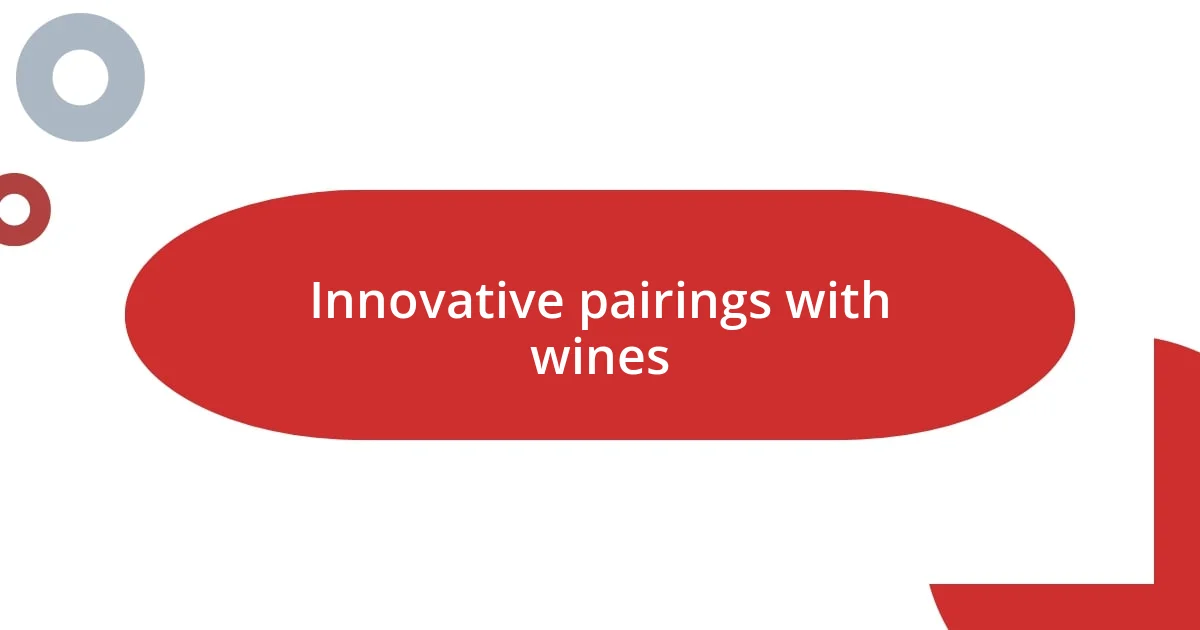
Innovative pairings with wines
Innovative cheese and wine pairings often push the boundaries of conventional taste. Last month, I attended a fantastic wine tasting where we experimented with a bold Cabernet Sauvignon paired with a rich Roquefort cheese. The earthiness of the blue cheese mingled surprisingly well with the wine’s tannins, creating a complex and delightful profile that kept us returning for more. Have you tried adding such contrasting flavors to your palate?
While some may stick to classic combinations, I’ve found that mixing unexpected wines can yield astonishing results. For instance, pairing a dry Riesling with tangy goat cheese opens a fresh dialogue of flavors—sweet, acidic, and creamy all at once. I remember one dinner party where we introduced this pairing, and guests were astonished by how beautifully the contrasting notes complemented each other. It felt like we had discovered a hidden treasure!
Another innovative approach is using dessert wines with savory cheeses. Picture this: a luscious Sauternes drizzled over aged Manchego. This pairing creates a symphony of sweet and savory that invites curiosity. At a cozy gathering with friends, we savored this combination, and it sparked lively discussions about how adventurous pairings can dramatically elevate our cheese experience. It’s moments like these that remind me of the sheer joy in exploring new flavor avenues.
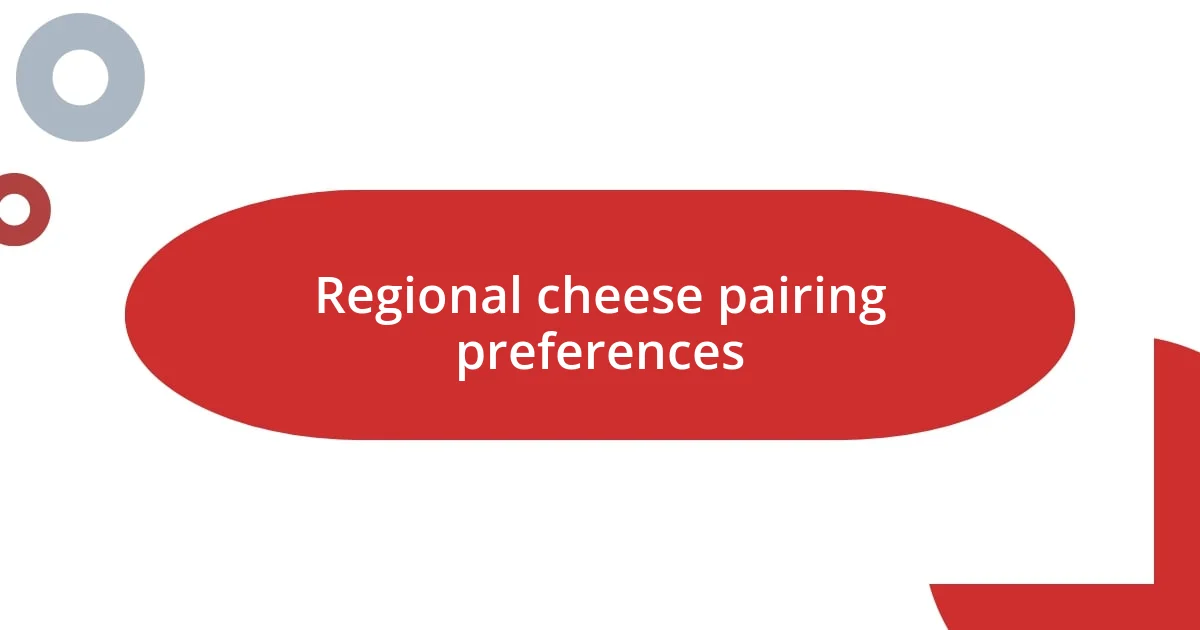
Regional cheese pairing preferences
When exploring regional cheese pairing preferences, I can’t help but notice how local flavors influence choices. For example, in Italy, you might find a rich Gorgonzola paired with figs or local honey, embodying the essence of Italian cuisine. The sweetness of the figs offsets the cheese’s tangy bite beautifully. Isn’t it fascinating how a region’s agricultural bounty shapes its cheese pairings?
In contrast, when I think of France, I’m drawn to the traditional combination of Camembert with crusty French bread and tart apple slices. It’s a classic, and there’s something almost poetic in this trio—each bite feels like a mini celebration of French gourmet culture. I still recall my first picnic in the French countryside, where friends and I savored this pairing alongside a bottle of crisp Chardonnay. The combination of flavors just felt right in that moment, don’t you think?
Traveling to the Mediterranean, I can’t resist mentioning the love for pairing cheese with olives. Picture a plate of creamy feta drizzled with olive oil, sprinkled with oregano and accompanied by marinated olives. It’s such a refreshing burst of flavor, evoking lazy afternoons by the sea. Each region brings something unique to the table, and that’s what I find most exciting about cheese pairings. Have you ever tried pairing cheeses from different regions? The exploration is truly endless!
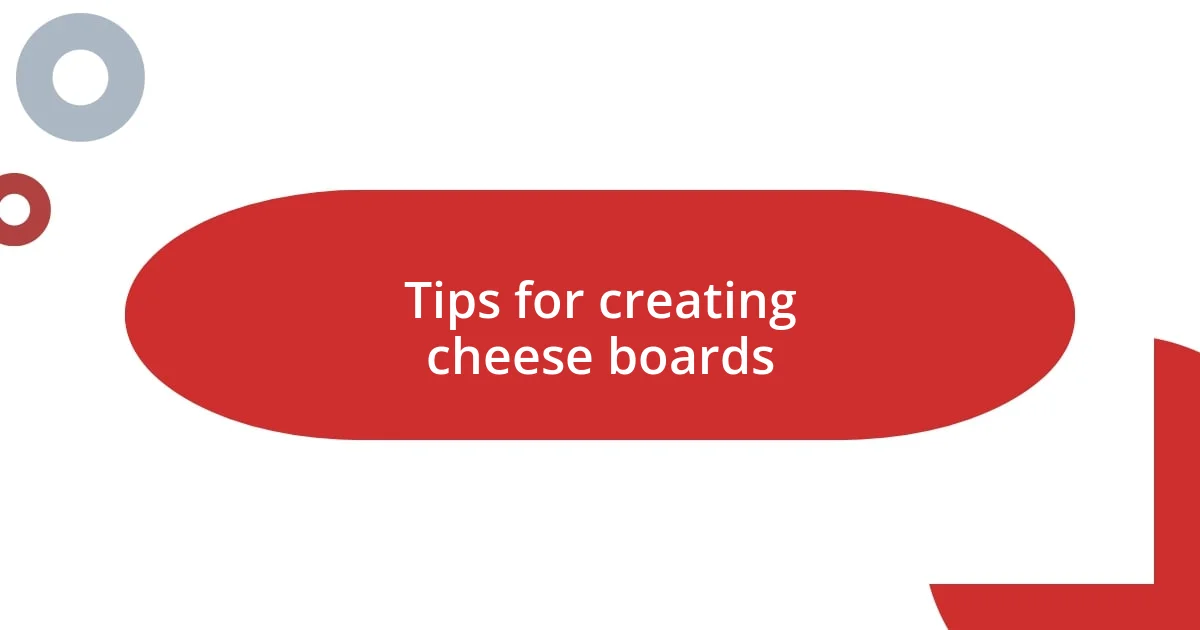
Tips for creating cheese boards
Creating an inviting cheese board is all about balance. I often start with a variety of textures and flavors, ensuring there’s a mix of soft, hard, creamy, and crumbly cheeses. One time, I added a vibrant aged Gouda alongside a silky Brie, and the contrast was visually stunning as well as delicious. Have you ever noticed how the way a board looks can really enhance the whole experience?
Don’t forget the accompaniments; they can elevate your cheese board to another level. I’ve found that including items like honey, nuts, and fresh fruit, like figs or grapes, offers delightful flavor bursts. One memorable evening, my friends and I munched on sharp cheddar with apple slices dipped in honey, and I was amazed at how those simple additions transformed our tasting into an event. What are your favorite pairings to compliment each cheese?
Lastly, consider the arrangement on your board. I like to create sections that draw the eye, alternating cheeses with crackers and bites of charcuterie. This not only makes for a visually stunning presentation but also invites guests to explore each flavor combination. At a recent gathering, I arranged my board in a spiral, and it was a hit! People loved the way it encouraged them to taste as they worked their way around. How do you plan your cheese board to inspire your guests?

